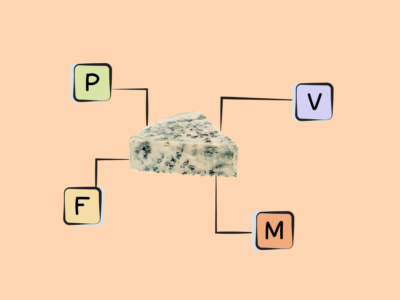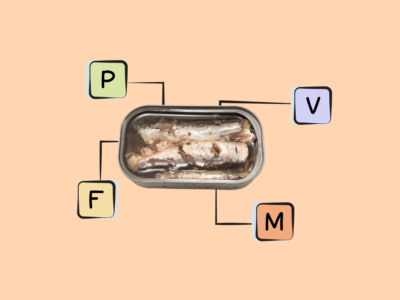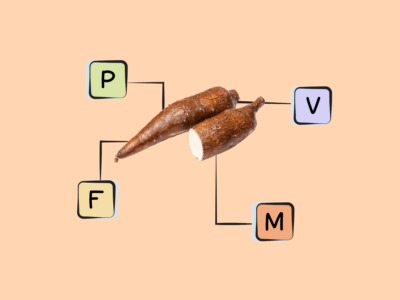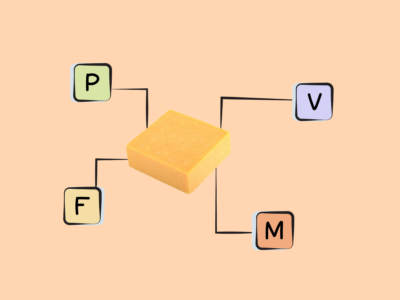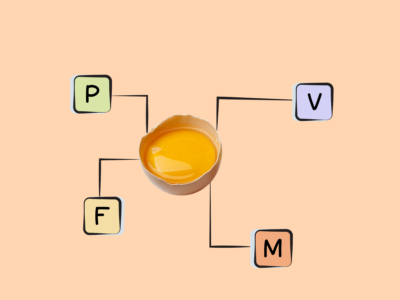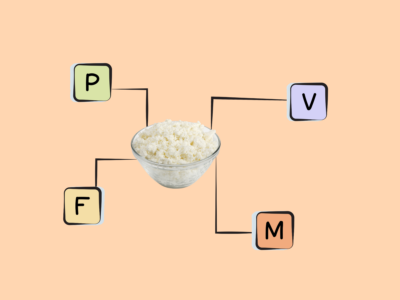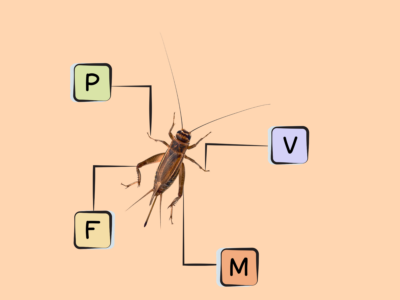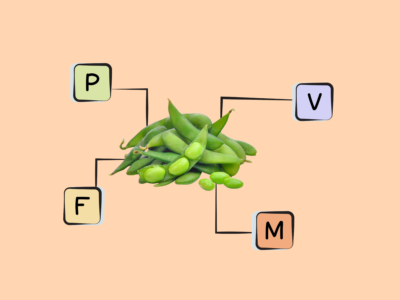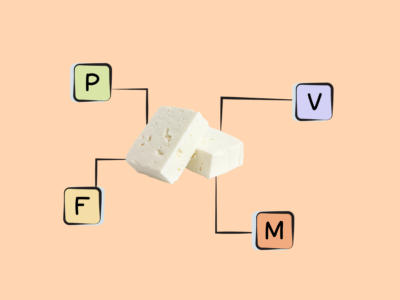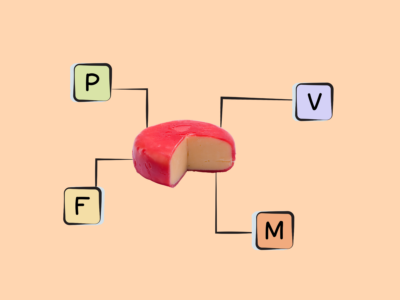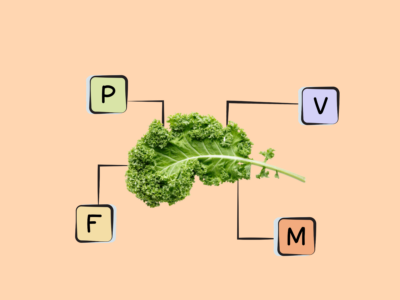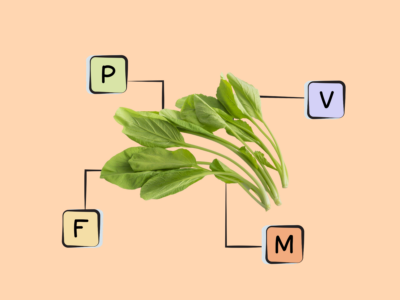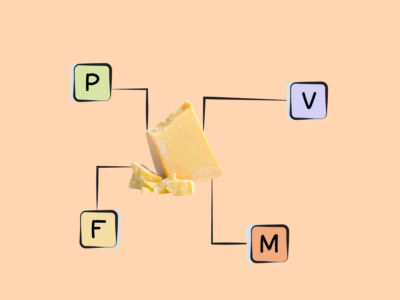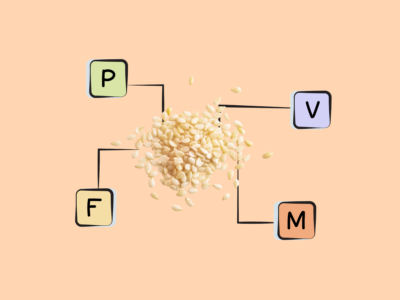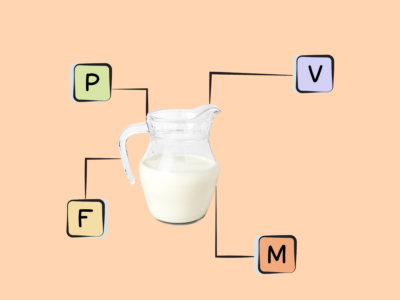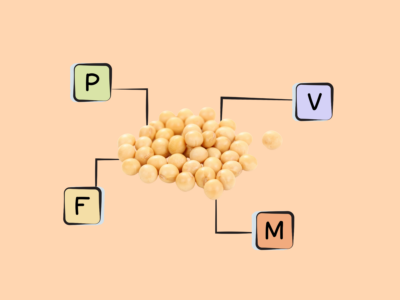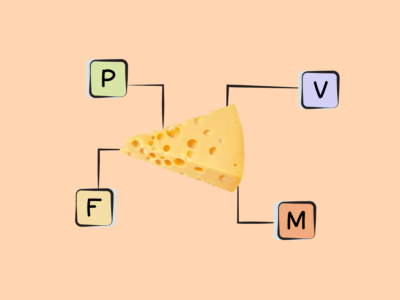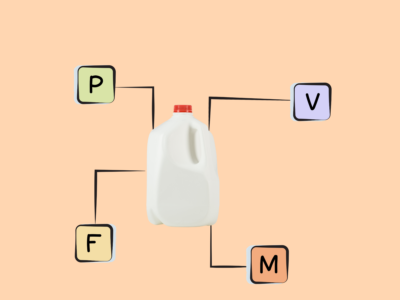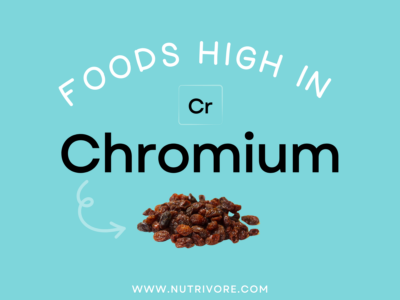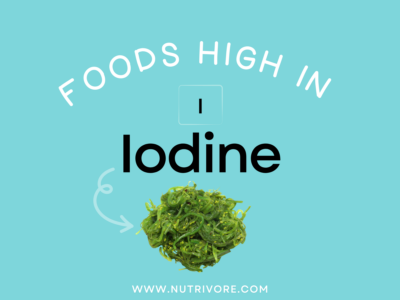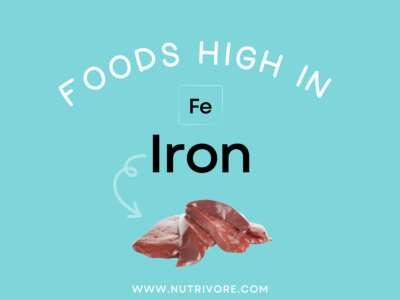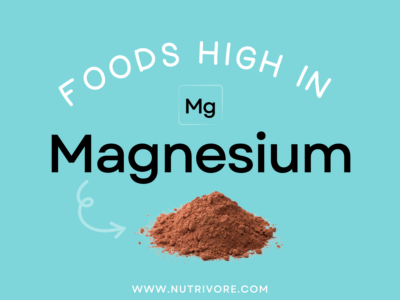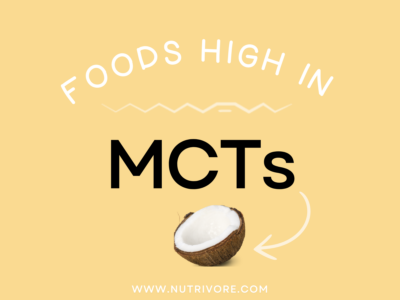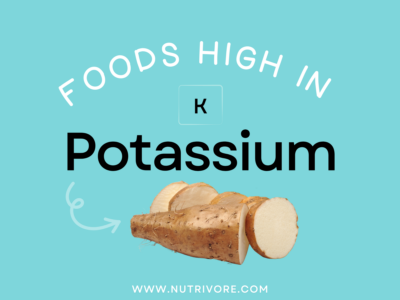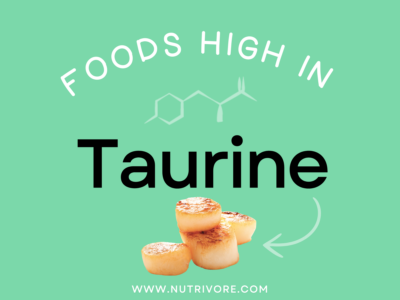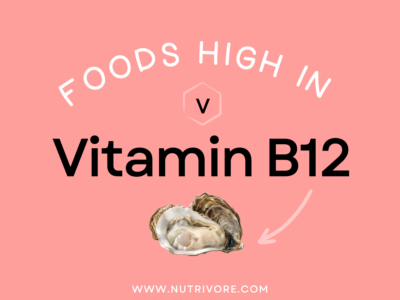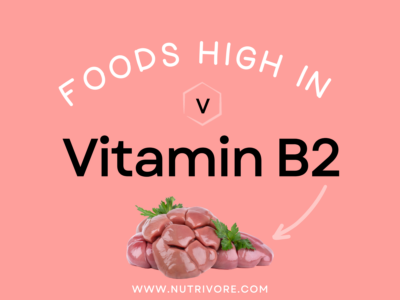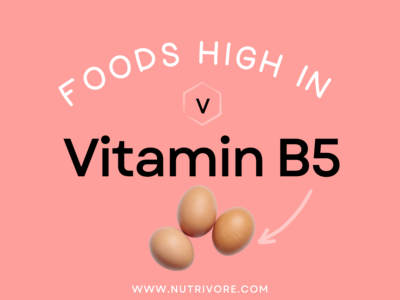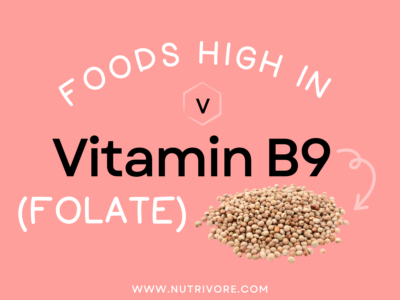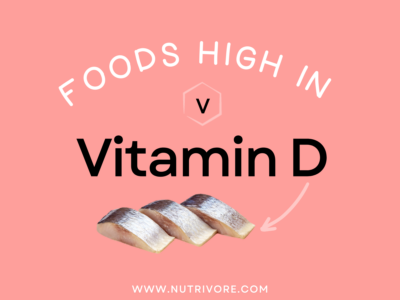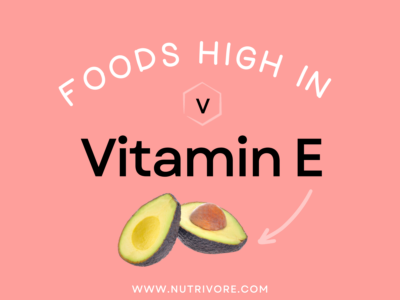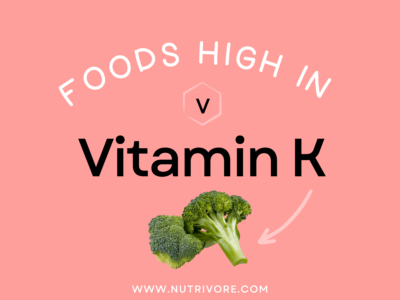Top 5 Common Food Sources of Calcium
Looking to get more mg of calcium in your diet? Look no further! My team and I have crunched the numbers and did all the math to determine the top 5 common food sources of calcium, per serving. Overall, there aren’t any common foods that provide half of the daily value of calcium per serving, so it’s important to choose a variety of calcium rich foods that deliver smaller amounts and and sprinkle those throughout the day. Getting calcium from our diet through healthy eating is important since a large collection of studies show that getting nutrients from dietary supplements doesn’t improve health outcomes compared to getting nutrients from foods! When it comes to calcium, if you’re planning to take a calcium supplement it’s worth seeking medical advice from your health care provider before beginning, especially if you have a family history of heart disease or other cardiovascular risk factors, because some evidence has linked calcium supplements to an increased risk of heart attacks and other health risks.
| Rank | Food | Nutrivore Score | Serving Size (Raw) | Calcium (mg/serving) | % Daily Value |
|---|---|---|---|---|---|
| 1 | Atlantic Sardines, Canned in Oil, w/ bone | 654 | 4 oz / 115 g | 439.3 | 34 |
| 2 | Cassava | 224 | 1 cup | 362.6 | 28 |
| 3 | Yogurt, Average1 | 208 | 1 cup | 343.0 | 26 |
| 4 | Cheese, Hard, Average2 | 130 | 1.5 oz / 40 g | 328.3 | 25 |
| 5 | Kefir, Low-Fat, Plain | 296 | 1 cup | 315.9 | 24 |
2Hard cheese, average includes cheddar, cheshire, colby, edam, fontina, gjetost, goat (hard type), gouda, gruyere, Monterey, parmesan, provolone, romano, swiss, and tilsit.
Want to know more about this important mineral famous for its role in building strong bones, including what calcium does in the body, how much calcium we need, what happens if we have low calcium levels or if we get too much, and even more awesome food sources of calcium? Keep reading to learn all there is to know!
Learn What Foods Are the Best Sources of Every Nutrient

The Top 25 Foods for Every Nutrient
The Top 25 Foods for Every Nutrient e-book is a well-organized, easy-to-use, grocery store-friendly guide to help you choose foods that fit your needs of 43 important nutrients while creating a balanced nutrient-dense diet.
Get two “Top 25” food lists for each nutrient, plus you’ll find RDA charts for everyone, informative visuals, fun facts, serving sizes and the 58 foods that are Nutrient Super Stars!
Buy now for instant digital access.
What Is Calcium and What Does It Do?
Calcium is the most abundant mineral in the human body, concentrated mostly in the bones and teeth (where it forms a major component of bone tissue). On top of its structural role in the skeleton, calcium functions as an electrolyte—a type of electricity-conducting mineral needed for regulating nerve impulses, the heartbeat, muscle contraction, fluid balance, and blood pH!
Getting enough calcium is vital for protecting against osteoporosis and bone fractures, especially in conjunction with vitamin D and magnesium. But, it can also help reduce your risk of kidney stones, protect against pregnancy-related high blood pressure, lower your risk of colorectal cancer (and improve survival following diagnosis), help you maintain a healthy body weight, and even reduce PMS symptoms!
Learn more about calcium here.
Calcium Deficiency
A 2011 study evaluated American’s usual nutrient intake including nutrients that are naturally-occurring in foods, from fortified and enriched foods, and from supplements. The results indicated that 54.9% of American adults usual diet falls short of the Estimated Average Requirement (EAR) for calcium intake.
Groups At Risk
Those at high risk of calcium deficiency include:
- people with lactose intolerance, or other individuals who avoid dairy products without replacing them with other calcium-rich foods, and
- postmenopausal women (due to decreased estrogen levels, which affect calcium absorption and bone density)
Learn more here.
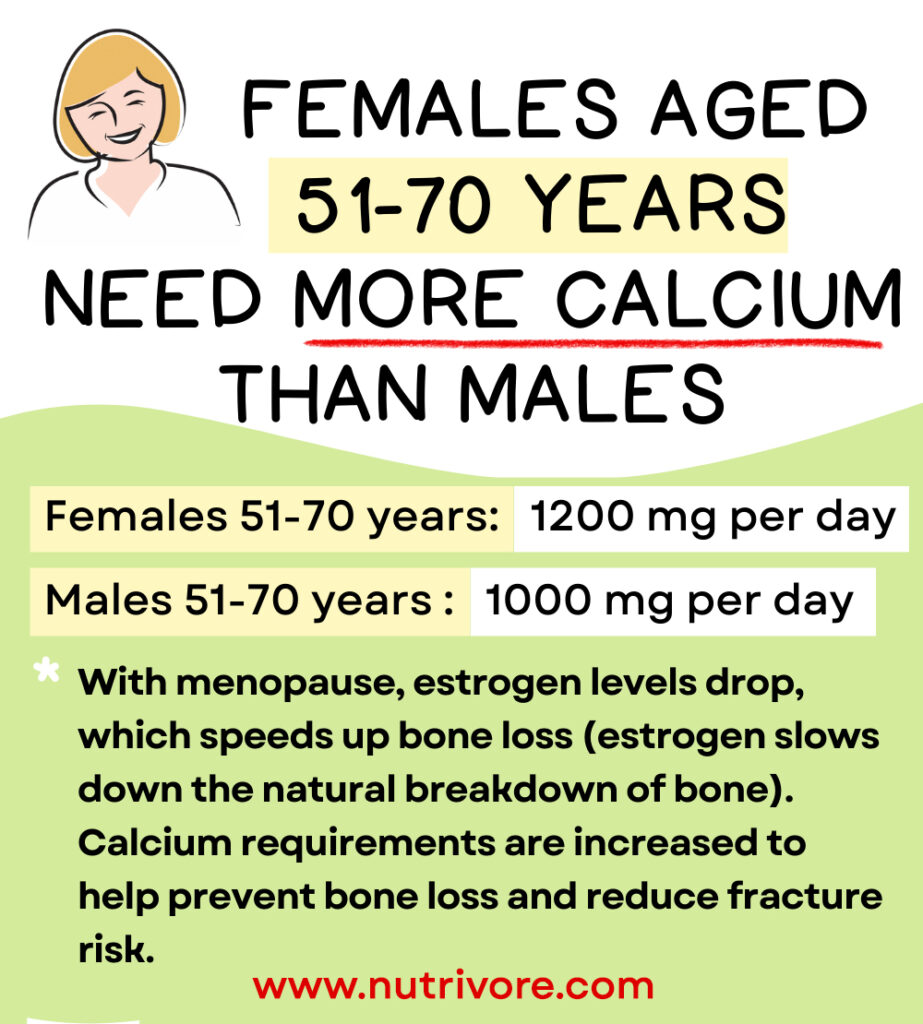
Symptoms of Deficiency
Calcium deficiency symptoms aren’t immediately obvious and won’t show up as low blood levels, as the body maintains stable calcium in the blood by drawing from bones. Chronic low calcium intake leads to excessive bone resorption, raising the risk of osteopenia, osteoporosis, fractures, and dental decay. In children, inadequate calcium can prevent reaching optimal peak bone mass. Severe deficiency, often due to other health conditions, can cause confusion, muscle cramps, memory loss, brittle nails, hallucination, and numbness and tingling hands or feet. Bone scans are the most reliable way to assess long-term calcium status.
When blood calcium levels drop too low, it is typically due to abnormal parathyroid function, vitamin D deficiency, kidney failure, or magnesium deficiency caused by alcoholism, all of which can occur independently of calcium intake.
Learn more here.
Problems From Too Much Calcium
Excess calcium intake, especially through high-dose supplements, can lead to hypercalcemia, a condition linked to kidney damage and potentially fatal outcomes if untreated. This risk is elevated in postmenopausal women and involves long-term supplement use at doses between 1.5 and 16.5 grams per day. Some studies suggest that calcium supplements may increase heart attack risk, possibly due to arterial plaque buildup, while dietary calcium is generally safer for cardiovascular health. Certain forms of calcium, like calcium carbonate and lactate, may cause gastrointestinal issues such as constipation, bloating, and abdominal pain, or be poorly absorbed by people on acid-reducing medications, making calcium citrate a preferred option. Additionally, high calcium intake from dairy may be associated with prostate cancer, though more research is needed. Staying within the recommended upper limit of 2000-2500 mg per day is generally considered safe.
Learn more here.
How Much Calcium Do We Need?
The following table summarizes the current recommended amounts of calcium, based on age, gender, or situation. When estimating intake, though, it’s important to keep in mind that calcium bioavailability varies among different foods, and can also be inhibited by some drugs that reduce calcium absorption!
It’s also important to note that calcium has some important interactions with other nutrients including magnesium, phosphorus, potassium, sodium, and vitamin D. Learn more here.
| 0 – 6 months | |||||
| 6 months to < 12 months | |||||
| 1 yr – 3 yrs | |||||
| 4 yrs – 8 yrs | |||||
| 9 yrs – 13 yrs | |||||
| 14 yrs – 18 yrs | |||||
| 19 yrs – 50 yrs | |||||
| 51+ yrs | 1200 (71+ yrs) | ||||
| Pregnant (14 – 18 yrs) | |||||
| Pregnant (19 – 30 yrs) | |||||
| Pregnant (31 – 50 yrs) | |||||
| Lactating (14 – 18 yrs) | |||||
| Lactating (19 – 30 yrs) | |||||
| Lactating (31 – 50 yrs) |
Nutrient Daily Values
Nutrition requirements and recommended nutrient intake for infants, children, adolescents, adults, mature adults, and pregnant and lactating individuals.
More Food Sources of Calcium
Along with dairy products such as cow’s milk and yogurt (particularly low-fat items), good sources of calcium are bone-in fish such as salmon or sardines, leafy greens and green vegetables in general (especially Brassica vegetables like kale, collard greens, turnip greens, bok choy, broccoli, and cabbage), sesame seeds, chia seeds, tofu, and seaweed. Some other plant foods like spinach, rhubarb, and beans are also relatively rich in calcium, but also contain high levels of oxalate or phytate, which bind to calcium and inhibit its absorption. Other food sources include calcium-fortified foods like fruit juices such as orange juice, milk alternatives such as soy milk, and certain cereals.
Good Food Sources of Calcium
The following foods are also excellent or good sources of calcium, containing at least 10% (and up to 50%) of the daily calcium value per serving.
Top 5 Common Food Sources
If you’re looking for top 5 common food sources of other important nutrients check out these posts!
cITATIONS
Expand to see all scientific references for this article.
Allender PS, Cutler JA, Follmann D, Cappuccio FP, Pryer J, Elliott P. Dietary calcium and blood pressure: a meta-analysis of randomized clinical trials. Ann Intern Med. 1996 May 1;124(9):825-31. doi: 10.7326/0003-4819-124-9-199605010-00007.
Alvir JM, Thys-Jacobs S. Premenstrual and menstrual symptom clusters and response to calcium treatment. Psychopharmacol Bull. 1991;27(2):145-8.
Arab A, Rafie N, Askari G, Taghiabadi M. Beneficial Role of Calcium in Premenstrual Syndrome: A Systematic Review of Current Literature. Int J Prev Med. 2020 Sep 22;11:156. doi: 10.4103/ijpvm.IJPVM_243_19.
Bonovas S, Fiorino G, Lytras T, Malesci A, Danese S. Calcium supplementation for the prevention of colorectal adenomas: A systematic review and meta-analysis of randomized controlled trials. World J Gastroenterol. 2016 May 14;22(18):4594-603. doi: 10.3748/wjg.v22.i18.4594.
Borer KT. Physical activity in the prevention and amelioration of osteoporosis in women: interaction of mechanical, hormonal and dietary factors. Sports Med. 2005;35(9):779-830. doi: 10.2165/00007256-200535090-00004.
Borghi L, Schianchi T, Meschi T, Guerra A, Allegri F, Maggiore U, Novarini A. Comparison of two diets for the prevention of recurrent stones in idiopathic hypercalciuria. N Engl J Med. 2002 Jan 10;346(2):77-84. doi: 10.1056/NEJMoa010369.
Calcium: Fact Sheet for Health Professionals. National Institutes of Health (NIH) Office of Dietary Supplements. 2022 Jun 2.
Chen YY, Chen YJ. Association between Dietary Calcium and Potassium and Diabetic Retinopathy: A Cross-Sectional Retrospective Study. Nutrients. 2022 Mar 4;14(5):1086. doi: 10.3390/nu14051086.
Chung M, Tang AM, Fu Z, Wang DD, Newberry SJ. Calcium Intake and Cardiovascular Disease Risk: An Updated Systematic Review and Meta-analysis. Ann Intern Med. 2016 Dec 20;165(12):856-866. doi: 10.7326/M16-1165. Epub 2016 Oct 25.
Clapham DE. Calcium signaling. Cell. 2007 Dec 14;131(6):1047-58. doi: 10.1016/j.cell.2007.11.028.
Cormick G, Ciapponi A, Cafferata ML, Cormick MS, Belizán JM. Calcium supplementation for prevention of primary hypertension. Cochrane Database Syst Rev. 2022 Jan 11;1(1):CD010037. doi: 10.1002/14651858.CD010037.pub4.
Fulgoni VL 3rd, Keast DR, Bailey RL, Dwyer J. Foods, fortificants, and supplements: Where do Americans get their nutrients? J Nutr. 2011 Oct;141(10):1847-54. doi: 10.3945/jn.111.142257. Epub 2011 Aug 24. PMID: 21865568; PMCID: PMC3174857.
Hess B, Jost C, Zipperle L, Takkinen R, Jaeger P. High-calcium intake abolishes hyperoxaluria and reduces urinary crystallization during a 20-fold normal oxalate load in humans. Nephrol Dial Transplant. 1998 Sep;13(9):2241-7. doi: 10.1093/ndt/13.9.2241.
Hofmeyr GJ, Lawrie TA, Atallah AN, Duley L, Torloni MR. Calcium supplementation during pregnancy for preventing hypertensive disorders and related problems. Cochrane Database Syst Rev. 2014 Jun 24;(6):CD001059. doi: 10.1002/14651858.CD001059.pub4.
Hosono S, Matsuo K, Kajiyama H, Hirose K, Suzuki T, Kawase T, Kidokoro K, Nakanishi T, Hamajima N, Kikkawa F, Tajima K, Tanaka H. Association between dietary calcium and vitamin D intake and cervical carcinogenesis among Japanese women. Eur J Clin Nutr. 2010 Apr;64(4):400-9. doi: 10.1038/ejcn.2010.28.
Hu J, Mao Y, White K; Canadian Cancer Registries Epidemiology Research Group. Diet and vitamin or mineral supplements and risk of renal cell carcinoma in Canada. Cancer Causes Control. 2003 Oct;14(8):705-14. doi: 10.1023/a:1026310323882.
Hu L, Ji J, Li D, Meng J, Yu B. The combined effect of vitamin K and calcium on bone mineral density in humans: a meta-analysis of randomized controlled trials. J Orthop Surg Res. 2021 Oct 14;16(1):592. doi: 10.1186/s13018-021-02728-4.
Ito T, Jensen RT. Association of long-term proton pump inhibitor therapy with bone fractures and effects on absorption of calcium, vitamin B12, iron, and magnesium. Curr Gastroenterol Rep. 2010 Dec;12(6):448-57. doi: 10.1007/s11894-010-0141-0.
Jayedi A, Zargar MS. Dietary calcium intake and hypertension risk: a dose-response meta-analysis of prospective cohort studies. Eur J Clin Nutr. 2019 Jul;73(7):969-978. doi: 10.1038/s41430-018-0275-y.
Lange JN, Wood KD, Mufarrij PW, Callahan MF, Easter L, Knight J, Holmes RP, Assimos DG. The impact of dietary calcium and oxalate ratios on stone risk. Urology. 2012 Jun;79(6):1226-9. doi: 10.1016/j.urology.2012.01.053.
Li P, Fan C, Lu Y, Qi K. Effects of calcium supplementation on body weight: a meta-analysis. Am J Clin Nutr. 2016 Nov;104(5):1263-1273. doi: 10.3945/ajcn.116.136242.
Murphy N, Norat T, Ferrari P, Jenab M, Bueno-de-Mesquita B, Skeie G, Olsen A, Tjønneland A, Dahm CC, Overvad K, Boutron-Ruault MC, Clavel-Chapelon F, Nailler L, Kaaks R, Teucher B, Boeing H, Bergmann MM, Trichopoulou A, Lagiou P, Trichopoulos D, Palli D, Pala V, Tumino R, Vineis P, Panico S, Peeters PH, Dik VK, Weiderpass E, Lund E, Garcia JR, Zamora-Ros R, Pérez MJ, Dorronsoro M, Navarro C, Ardanaz E, Manjer J, Almquist M, Johansson I, Palmqvist R, Khaw KT, Wareham N, Key TJ, Crowe FL, Fedirko V, Gunter MJ, Riboli E. Consumption of dairy products and colorectal cancer in the European Prospective Investigation into Cancer and Nutrition (EPIC). PLoS One. 2013 Sep 2;8(9):e72715. doi: 10.1371/journal.pone.0072715.
Myung SK, Kim HB, Lee YJ, Choi YJ, Oh SW. Calcium Supplements and Risk of Cardiovascular Disease: A Meta-Analysis of Clinical Trials. Nutrients. 2021 Jan 26;13(2):368. doi: 10.3390/nu13020368.
Seo MH, Kim MK, Park SE, Rhee EJ, Park CY, Lee WY, Baek KH, Song KH, Kang MI, Oh KW. The association between daily calcium intake and sarcopenia in older, non-obese Korean adults: the fourth Korea National Health and Nutrition Examination Survey (KNHANES IV) 2009. Endocr J. 2013;60(5):679-86. doi: 10.1507/endocrj.ej12-0395.
Shobeiri F, Araste FE, Ebrahimi R, Jenabi E, Nazari M. Effect of calcium on premenstrual syndrome: A double-blind randomized clinical trial. Obstet Gynecol Sci. 2017 Jan;60(1):100-105. doi: 10.5468/ogs.2017.60.1.100.
Silk LN, Greene DA, Baker MK. The Effect of Calcium or Calcium and Vitamin D Supplementation on Bone Mineral Density in Healthy Males: A Systematic Review and Meta-Analysis. Int J Sport Nutr Exerc Metab. 2015 Oct;25(5):510-24. doi: 10.1123/ijsnem.2014-0202.
Soares MJ, Pathak K, Calton EK. Calcium and vitamin D in the regulation of energy balance: where do we stand? Int J Mol Sci. 2014 Mar 20;15(3):4938-45. doi: 10.3390/ijms15034938.
Taylor EN, Curhan GC. Dietary calcium from dairy and nondairy sources, and risk of symptomatic kidney stones. J Urol. 2013 Oct;190(4):1255-9. doi: 10.1016/j.juro.2013.03.074.
van Dronkelaar C, van Velzen A, Abdelrazek M, van der Steen A, Weijs PJM, Tieland M. Minerals and Sarcopenia; The Role of Calcium, Iron, Magnesium, Phosphorus, Potassium, Selenium, Sodium, and Zinc on Muscle Mass, Muscle Strength, and Physical Performance in Older Adults: A Systematic Review. J Am Med Dir Assoc. 2018 Jan;19(1):6-11.e3. doi: 10.1016/j.jamda.2017.05.026.
Wang Z, Wang W, Yang A, Zhao W, Yang J, Wang Z, Wang W, Su X, Wang J, Song J, Li L, Lv W, Li D, Liu H, Wang C, Hao M. Lower dietary mineral intake is significantly associated with cervical cancer risk in a population-based cross-sectional study. J Cancer. 2021 Jan 1;12(1):111-123. doi: 10.7150/jca.39806.
Weaver CM, Alexander DD, Boushey CJ, Dawson-Hughes B, Lappe JM, LeBoff MS, Liu S, Looker AC, Wallace TC, Wang DD. Calcium plus vitamin D supplementation and risk of fractures: an updated meta-analysis from the National Osteoporosis Foundation. Osteoporos Int. 2016 Jan;27(1):367-76. doi: 10.1007/s00198-015-3386-5.
Wood RJ, Zheng JJ. High dietary calcium intakes reduce zinc absorption and balance in humans. Am J Clin Nutr. 1997 Jun;65(6):1803-9. doi: 10.1093/ajcn/65.6.1803.
Yang W, Ma Y, Smith-Warner S, Song M, Wu K, Wang M, Chan AT, Ogino S, Fuchs CS, Poylin V, Ng K, Meyerhardt JA, Giovannucci EL, Zhang X. Calcium Intake and Survival after Colorectal Cancer Diagnosis. Clin Cancer Res. 2019 Mar 15;25(6):1980-1988. doi: 10.1158/1078-0432.CCR-18-2965.
Zemel MB, Shi H, Greer B, Dirienzo D, Zemel PC. Regulation of adiposity by dietary calcium. FASEB J. 2000 Jun;14(9):1132-8.
Zemel MB, Thompson W, Milstead A, Morris K, Campbell P. Calcium and dairy acceleration of weight and fat loss during energy restriction in obese adults. Obes Res. 2004 Apr;12(4):582-90. doi: 10.1038/oby.2004.67.



